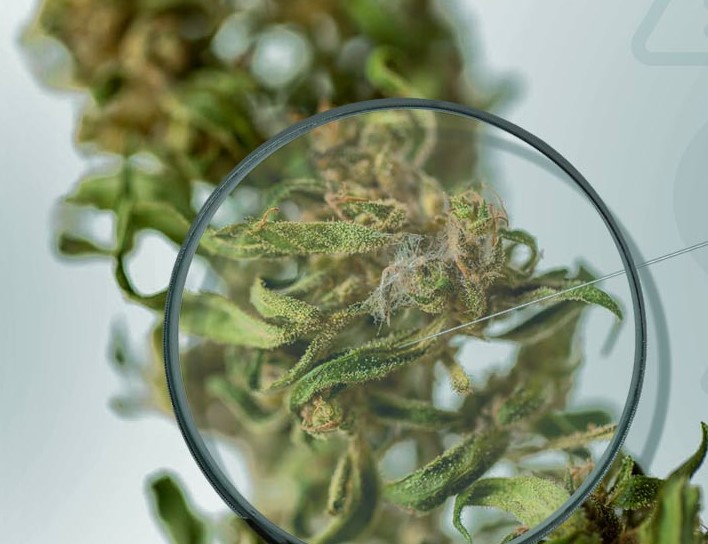Uncategorized
Moldy Cannabis
“Curse you, mold! May you rot in the deepest parts of hell!” You shouldn’t have to scream this shirtless on your knees before a cannabis garden that’s been struck by mold. Weed mold is serious business for stoners, and this article might just save your life one day.
Imagine devoting months to taking care of your grow, only to find out too late that it’s infested with bud rot or mould. If you were to unknowingly smoke it anyway, the health consequences could be grave. That’s why being able to avoid and identify mouldy weed is non-negotiable for any dedicated grower or smoker. You owe it to yourself – and your lungs – to take good care of your plants..
Red Alert: Bud Mold
Moldy cannabis is, in our view, the most dangerous public enemy number one. It’s cannabis mold, which may harm a marijuana garden and is possibly the most harmful and poisonous danger to the typical decent stoner.
Moldy marijuana is more than just a poor excuse for a stash; it’s toxic waste that you should handle as such. You are consuming thousands, perhaps tens of thousands of nasty microbial spores if you consume moldy marijuana, whether you eat it, smoke it, or vape it.
The best-case scenario is that the unpleasant taste puts you off consuming much and you quickly get rid of the rest of the contaminated weed stash.
At the absolute worst, you might wind up bedridden with a severe lung infection, and your only frequent visitor is a slimy anti-marijuana lobbyist intent on obtaining the rights to the story of history’s first recorded cannabis death.
Research on the Dangers of Smoking Mouldy Weed
There is some evidence that avoiding mouldy marijuana may be beneficial to your health. In 2011, Gargani conducted a study on two fatalities caused by lung infections. It was discovered in both situations that the fungus Aspergillus fumigatus had grown in their lungs and eventually played a role in their death. Furthermore, it’s unclear whether this fungus survives burning, so it may well have been exposed to cannabis smoke that caused it.
These were two heavy smokers who, on average, smoked 20 joints a day for several decades. So it’s doubtful that one mouldy spliff will kill you. However, this does show that the risks associated with smoking mouldy weed are more than just a myth.

How To Detect A Moldy Weed When You’re Buying
You shouldn’t have to worry about moldy weed if you’re buying your stash from a decent cannabis club, coffee shop, or your marijuana dispensary. Mold, on the other hand, does not distinguish between amateurs and experts; all it takes is ideal circumstances throughout the process in order to grow.
If a cannabis retailer doesn’t cure or store their weed properly, it can turn into moldy and gross very quickly. Wet weed is an ideal environment for fungus and mold to grow.
After that, the result is a bag that’s neither gloriously uniform nor particularly harmonious; it just looks like there’s been some sort of accident. The drying process has to be thorough and gentle, ideally in simple brown paper bags with minimal air circulation during the final stage.
Generally, moldy weed smells rank and mildew-like. Sometimes the aroma is more similar to hay, but there will always be an unpleasant odor. Make sure to give your proposed stash a good smell as well as inspect it with your eyes.
Customers that get overly touchy feely with the weed menu are frowned upon by most high-end cannabis retail businesses.
Only if the budtender gives you permission, sample a spliff or hit from a pipe. This will give you the best sense of touch and taste. If they say it’s okay, take advantage of the opportunity – after all, free hits are the best kind.
How To Spot Mouldy Weed
When trying to determine if your weed is mouldy, Look for the following signs: Some of them are not immediately obvious, as they can resemble healthy buds.
Signs include:
- The’subtly greyish-white coating is “dustier” than the shiny, resinous trichome covering.
- Spores will give off a green tinge when under a blacklight (UV).
- Cat-urine-like smell
- Black or dark green spots on the bud
- White, grey, yellow, or brown fuzz
- White, grey, or black web-like substance
- Mite webbing or mildew (these appear to be the same; both are undesirable)
- Powdery mildew: can resemble dusted kief, but looks drier and dustier
- Slime
Obviously, you want to make sure your weed is healthy before smoking it. Here are a few signs that signify it’s good to go:
- Rich colours (under normal light)
- The aroma of the weedy, pungent “weedy” scents isn’t frightening.
- Sticky, but free from strange substances
- Free of patches of growth
By using our guide to cannabis tasting, you will be able to identify bad cannabis and avoid it in the future!
Is it possible to get mould out of cannabis? Sadly, there is no way to remove mould from buds; if it’s there, it’ll stay. Our bodies have developed a resistance to all things musty. So, if your eyes or nose are telling you something is wrong, trust them.
How To Detect Moldy Weed When You’re Growing
Mould detection is critical to saving the crop at any point during development. The bad news: the sick plant must be removed as soon as possible. The good news: if you act swiftly enough, the surrounding plants may survive.
Buying a pocket microscope doesn’t have to break the bank and can help you catch potential fungal infections early. If you wait until your buds are covered in spores, it’s likely that the infection has already spread to all of your plants. By checking regularly with a microscope, you might be able to spot the first infection before it gets out of hand.
As the saying goes, an ounce of prevention is worth a pound of cure. By understanding temperature, humidity and other factors that affect cannabis growth, you can better avoid problems like mould.
How To Prevent and Detect Mouldy Weed When Drying, Curing, and Storing
Even after you’ve harvested your marijuana buds, they could still grow mould during the trimming, drying, curing, and storage processes. In fact, smoking is the only guaranteed way to prevent weed from developing mould.
Fortunately, a little bit of good practice should protect your buds from mould’s ravenous desires.
While post-harvesting, what are some things to look for in order to tell if the crop is still good? For example, feel the crops–are they abnormally soft or have any unusual growths? Also, smell them; if they’re emitting a foul odor, then that’s another sign that it’s time to toss them.
By answering these questions, you can figure out the health of your buds and stop mould before it starts. This is also a great time to take a close look at your weed as you’ll be handling it soon anyway. So use this chance to get up close!
Below are some suggestions on how to prevent mould at each stage.
Trimming
There are two ways to remove your crop. Trimming right after harvest is more common among growers concerned with mould. This approach, referred on as “wet trimming,” is more successful at preventing mould than the alternative, known as “dry trimming.”
- Remove any excess leaves around the flowers without damaging the flower itself. Trim off any dead or dying parts of the plant!
- By removing the leaves and stems, not only will your final product have a better appearance, but it reduces the likelihood of mould setting in. The water content in leaves/stems will slow down the drying/curing process, which increases fungi’s opportunity to take hold.
- If you want to avoid losing trichomes, wet trimming is the way to go since there’s less agitation. However, if you dry trim, be more careful as the trichomes are more fragile and can easily break off.
Drying
Drying your buds is a crucial part of the process. If you do it correctly, it will significantly reduce your chances of mould affecting your product.
- Dry your buds for 7–12 days (or more if they are very dense).
- Make sure to use a dark room that has good air circulation, and keep the relative humidity at 45–55%.
- If the fragile stems near each bud snap instead of bending, then it’s time to begin curing the plants.
Сuring
It’s time to cure and properly dry the buds after the water has been removed from them. It takes three days for buds to fully cure in a dark, cool environment.
- Place your weed in airtight jars in a dark, dry environment.
- Be on the lookout for small white spots. They might not look like much, but they can indicate that mold is present.
- Check your jars daily, opening them to let the buds breathe for a couple of minutes. This is called “burping” and helps circulate air around the jar while preventing mold growth.
- Continue this process for at least 2–8 weeks.
- A longer cure will result in more potent, flavorful buds!
Storage
Finally, proper storage means that your buds will not mould until you are ready to smoke them.
- Keep your buds in airtight containers or stash boxes.
- Maintain a dark, dry, and cold atmosphere—around 25°C is ideal.
- Maintaining a relative humidity of 58–62 percent will aid in the prevention of mould while also preventing the weed from drying out too much.
- Avoid fridges and freezers!
- Use humidity packs, like Moisture Fighters, to ensure that your environment has ideal moisture levels.
- As long as your weed is dried, cured, and stored properly, you won’t have to do anything to it while it’s in storage.
Although cannabis is long-lasting when stored correctly, cannabinoids will degrade and alter over time, so while weed has a long shelf life, it isn’t indestructible.

The Consequences of Moldy Weed for Ganjapreneurs, Growers, & Stoners
If even one plant in your grow op is mold-infested, the entire operation is at risk for contamination. This includes all other plants, the growing medium, and containers. If you’re growing indoors, you’ll need to clean thegrow room or grow tent thoroughly so no spores remain to infect future crops.
It’s a horrible situation; you can try using various anti-mold chemicals, but the plant mortality rate will always be unacceptable. Moldy marijuana is something that every serious cannabis grower must be vigilant against at every stage, from seed to smoke.
Moldy marijuana is toxic and no cannabis user should ever consume it in any form. Equally, none of the growers or ganjapreneurs should trade moldy cannabis. A guaranteed reputation-ruiner.
Stoners must avoid unclean stashes at all costs, and by performing a few simple checks you can at least determine if your marijuana is clean or not before parting with your money.
We always recommend growing your own fine organic herb and adding liquid silica to toughen plants up. Furthermore, using aerated, well-draining premium quality substrate is essential.


